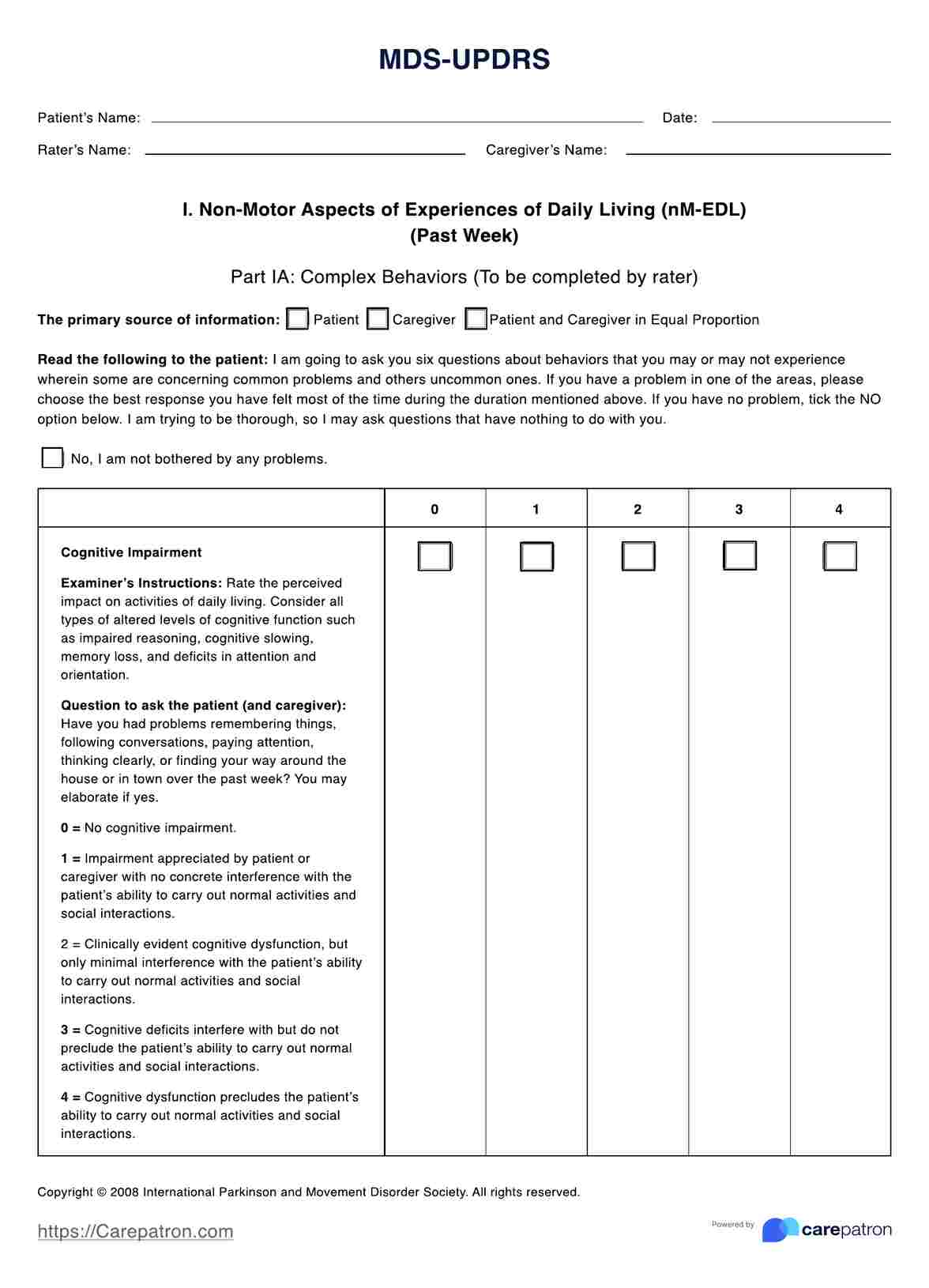The Movement Disorder Society’s task force was the one who created the MDS-UPDRS by modifying and updating sections in the UPDRS.

MDS-UPDRS
Use this Movement Disorder Society-Sponsored Revision of the Unified Parkinson’s Disease Rating Scale to assess Parkinson’s disease in a patient.
MDS-UPDRS Template
Commonly asked questions
Similar to the UPDRS, one uses the scale by either observing and rating the patient or giving it to them so they may reflect on and answer the provided questions.
Using the MDS-UPDRS scale in your practice, on the other hand, will completely depend on you as the expert. For a quick refresher, you may refer to the “When to use these MDS-UPDRS tests” section in this guide.
If the patient gets a total score more than or equal to 48 in Part 1, more than or equal to 42 in Parts II and IV, and more than or equal to 39 in Part III, they are considered to have a severe case of Parkinson disease in the sections where they got the equal or higher score.
EHR and practice management software
Get started for free
*No credit card required
Free
$0/usd
Unlimited clients
Telehealth
1GB of storage
Client portal text
Automated billing and online payments











